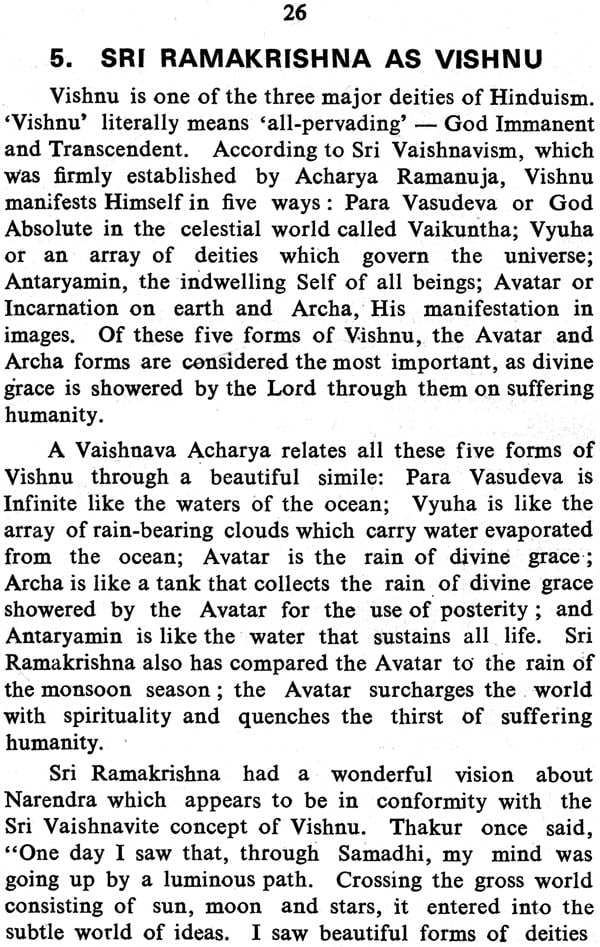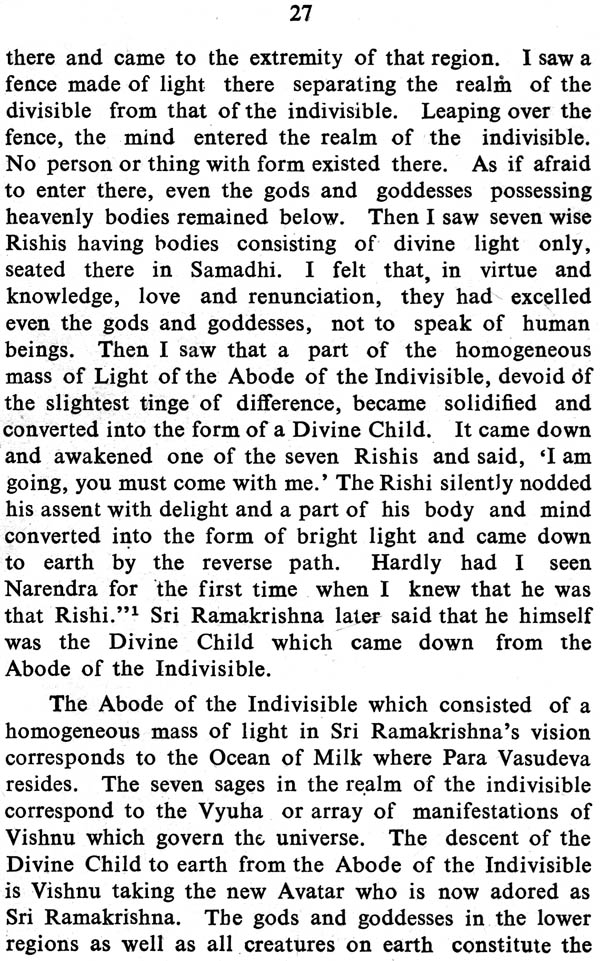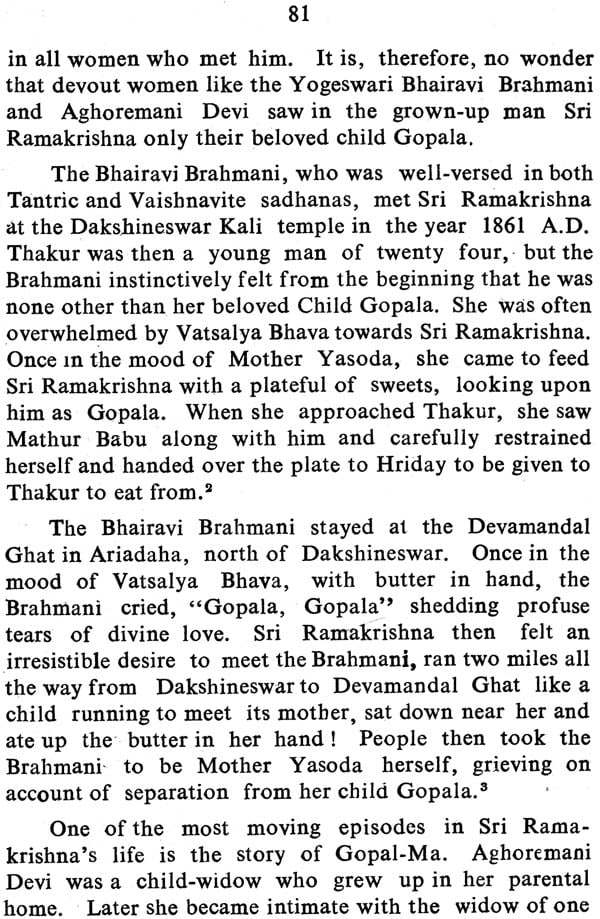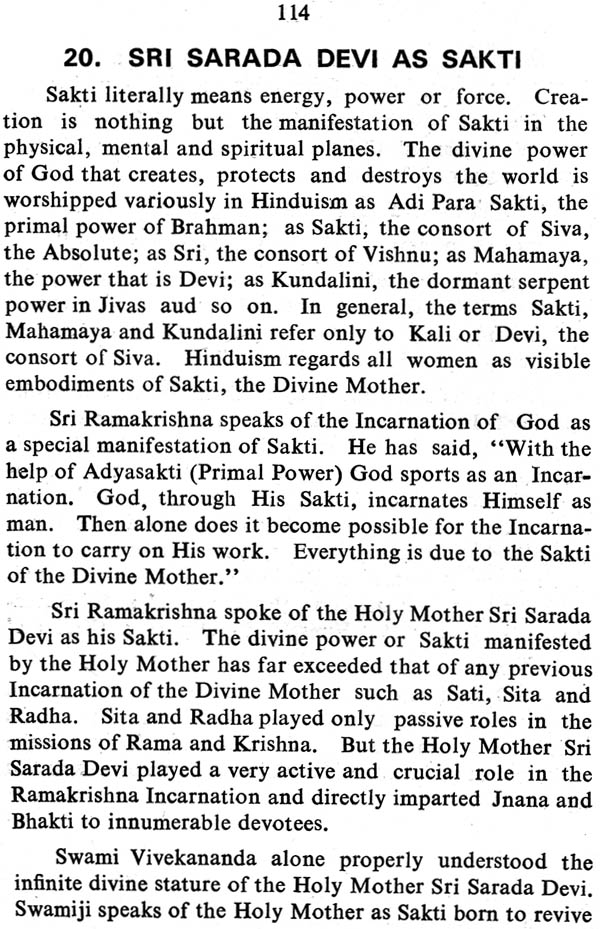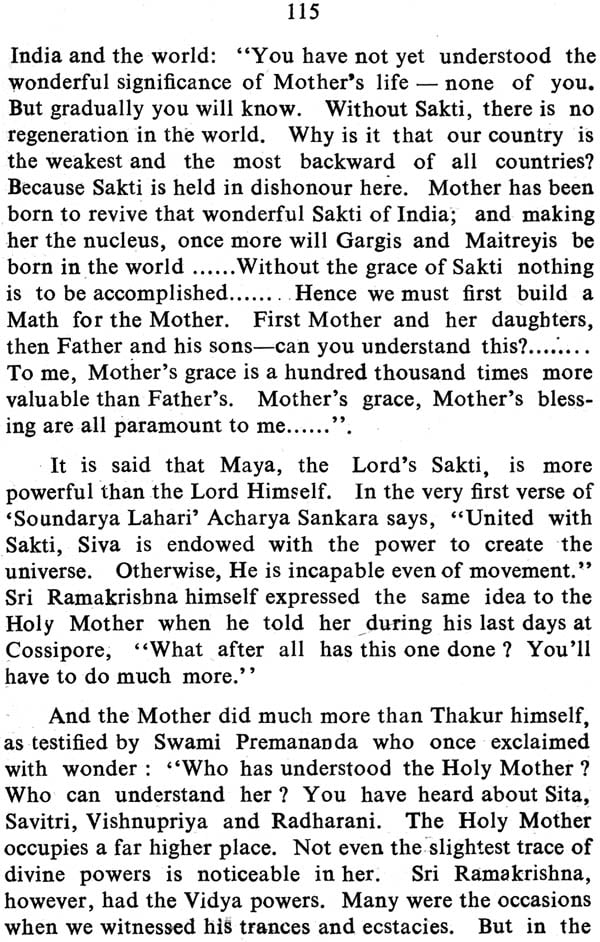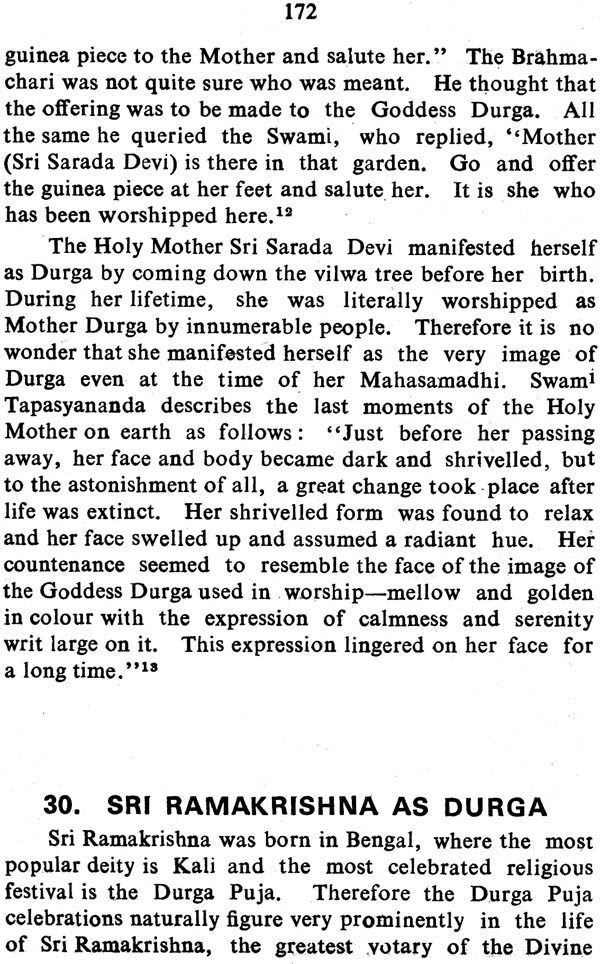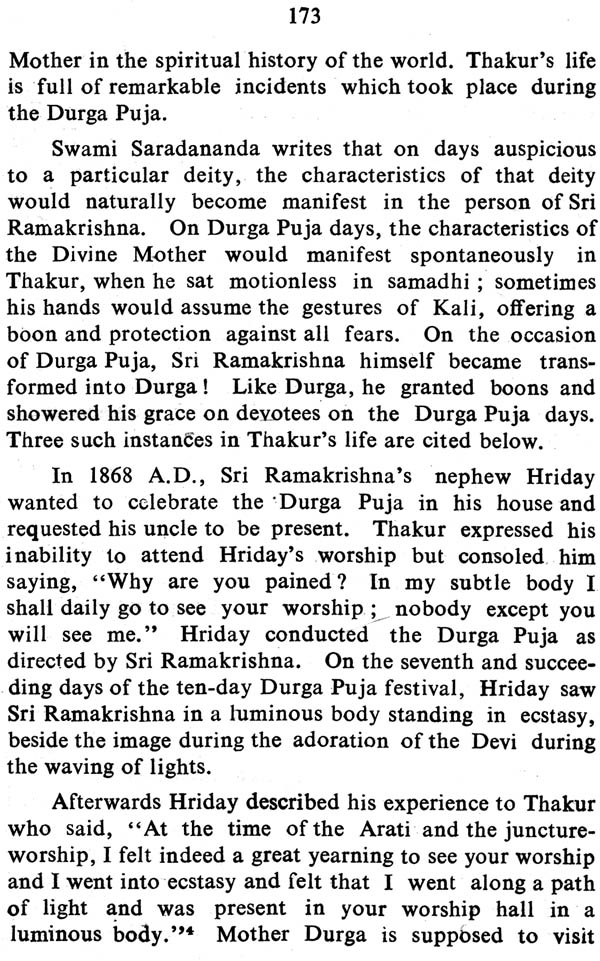
Sri Ramakrishna Bhagavata (An Old and Rare Book)
Book Specification
| Item Code: | NAH203 |
| Author: | R.S. Ramabadran |
| Publisher: | Tirumala Tirupati Devasthanams, Tirupati |
| Language: | Urdu Text with English Translation |
| Edition: | 2002 |
| Pages: | 194 |
| Cover: | Paperback |
| Other Details | 6.5 inch X 4.5 inch |
| Weight | 140 gm |
Book Description
About the Book
Revered Swami Tapasyanandaji Maharaj, Vice President of Ramakrishna Math and Mission, writer:
“His knowledge of the Hindu Puranas and the ltihasas on the one hand and of the life and teachings of Sri Ramakrishna on the other, have helped Ramabadran to find parallelisms in the Puranic lore for most of the incidents and saying of Sri Ramakrishna. In a very ingenious way he has superimposed these two mutually and formed a nexus providing matter for deep thought. The book provides stimulating reading.”
Such a good book never fails to give pure joy and spiritual experience to readers.
Foreword
The 19th Century is generally recognised as a period of spiritual renaissance in India. During this time several eminent sages appeared in the north and south of this country. History has proved most of them to be only of provincial interest. But among them Sri Ramakrishna stands out as a personality of world-wide significance. Though-he lived practically the whole of his life confined to the temple of Dakshineswar, the power emanating from him and the great relevance of his teachings to the requirements of the present day world have helped to spread their influence all the world over. This encounter between him and the world- consciousness has produced a body of literature and institutions that are attaining great popularity.
Sri Ramabadran's “Sri Ramakrishna Bhagavata” is an example of the literary productions deriving inspiration from the personality of Sri Ramakrishna and his message. His knowledge of the Hindu Puranas and the Itihasas on the one hand and of the life and teachings of Sri Ramakrishna on the other, have helped Ramabadran to find parallelisms in the Puranic lore for most of the incidents and sayings of Sri Rama- krishna. In a very ingenious way he has superimposed these two mutually and formed a nexus providing matter for deep thought. The book provides stimulating reading.
Preface
Bhagavan Sri Ramakrishna and the Holy Mother Sri Sarada Devi are known among devotees as “Sarva-Deva-Devi-Swarupjns “ (embodiments of all gods and goddesses). This book, the first of a series of five or six volumes, is a humble attempt to study them as such.
The title “Bhagavata” for this series is no doubt a little ambitious and needs some explaining. There are certain centuries-old conventional requirements for religious books in Sanskrit to be styled a Purana such as The Bhagavata, which, perhaps, are not very relevant for a book written in English in this age. Generally speaking, all religious books which deal with the life and teachings of an Incarnation of God so as to inculcate devotion and faith in the minds of readers, such as this present work on Sri Ramakrishna, may be termed “Bhagavata”.
Nevertheless, there are special reasons, for the title of this book. Firstly, it relates many events from past Puranas like the Bhagavata and Itihasas like the Ramayana with the lives and teachings of Bhagavan Sri Ramakrishna, the Holy Mother Sri Sarada Devi and Swami Vivekananda. Secondly, it is modelled on the great Srimad Bhagavata in one important respect. The Bhagavata Purana identifies all great epoch-makers with Vishnu and concludes that Krishna is His greatest Avatar (Krishnastu Bhagavan Swayam). Similarly r this work identifies not only all previous Avatars including Krishna with Sri Ramakrishna, but also all deities. Therefore this series of books has been named “Sri Ramakrishna Bhagavata”.
Each chapter of this book identifies Sri Rama-krishna or Sri Sarada Devi with a particular deity or Avatar. This arrangement has a special advantage and significance of its own for devotees. Swami Saradananda has stated in his great biography that on any day auspicious to a particular deity, the characteristics of that deity manifested themselves spontaneously in the person of Sri Ramakrishna. Therefore, on a day auspicious to each deity or Avatar, the relevant chapter identifying that particular aspect of divinity with Sri Ramakrishna or Sri Sarada Devi may be read with benefit by devotees. For example, on Ganesa Chaturthi, the chapter “Sri Rama-krishna As Ganesa” can be read and so on.
I consider myself singularly fortunate in having received a Foreword for this book on Sri Guru Maharaj from no less eminent an authority than my Guru, the Revered Swami Tapasyanandaji Maharaj, Vice President of the Ramakrishna Math and Mission, himself. I am also indebted to Swami Raghaveshanandaji Maharaj, Manager, Sri Ramakrishna Math, Madras, for kindly providing me with certain facilities during the execution of this book as well as for his advice in some matters. I am also indebted to Swami Yatatmanandaji Maharaj of Madras Math and to Sri C. S. Ramakrishnan in this regard.
I wish to thank my good friends-Sri G. Maheswara Rao of M/s P.V. Ramachandra Rao Group of Companies, Srikalahasti (A.P.), as well as Sri P. Shivaji Kumar, an active devotee of Madras Math, for encouraging me to publish this book.
Suggestions, criticism and comments on this book are most welcome from readers.
Guru Purnima
Contents
| Foreword | vi | |
| Preface | vii | |
| 1. | Sri Ramakrishna as Ganesa | 1 |
| 2. | Sri Sarada Devi as Saraswati | 6 |
| 3. | Sri Ramakrishna as Brahma | 13 |
| 4. | Sri Sarada Devi as Lakshmi | 17 |
| 5. | Sri Ramakrishna as Visbnu | 26 |
| 6. | Sri Sarada Devi as Sita | 33 |
| 7. | Sri Ramakrishna as Sita | 36 |
| 8. | Sri Ramakrishna as Rama | 42 |
| 9. | Sri Ramakrishna as Raghuvir | 51 |
| 10. | Sri Ramakrishna as Hanuman | 56 |
| 11. | Sri Sarada Devi as Radha | 61 |
| 12. | Sri Ramakrishna as Radha | 66 |
| 13. | Sri Ramakrishna as Krishna | 74 |
| 14. | Sri Ramakrishna as Gopala | 80 |
| 15. | Sri Sarada Devi as Vishnupriya | 85 |
| 16. | Sri Ramakrishna as Chaitanya | 90 |
| 17. | Sri Ramakrishna as Nityananda | 98 |
| 18. | Sri Sarada Devi as Uma | 104 |
| 19. | Sri Sarada Devi as Parvati | 109 |
| 20. | Sri Sarada Devi as Sakti | 114 |
| 21. | Sri Ramakrishna as Siva | 119 |
| 22. | Sri Sarada Devi as Bhavatarini | 127 |
| 23. | Sri Sarada Devi as Phalaharini | 132 |
| 24. | Sri Sarada Devi as Shodasi | 136 |
| 25. | Sri Sarada Devi as Simhavahini | 142 |
| 26. | Sri Sarada Devi as Jagaddhatri | 146 |
| 27. | Sri Sarada Devi as Kali | 150 |
| 28. | Sri Ramakrishna as Kali | 159 |
| 29. | Sri Sarada Devi as Durga | 166 |
| 30. | Sri Ramakrishna as Durga | 172 |
| Bibliography | 179 | |
| Acknowledgements | 181 | |
| References | 182 |
